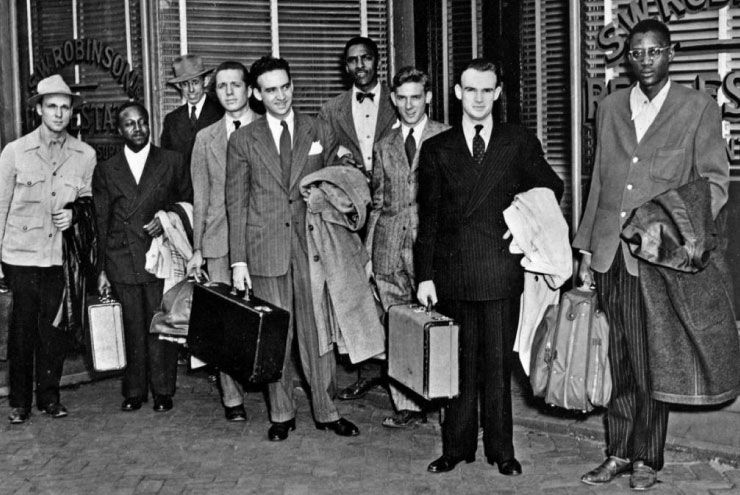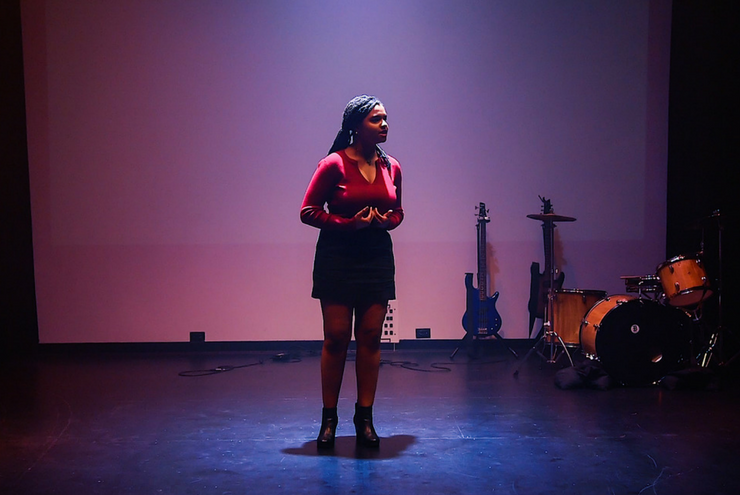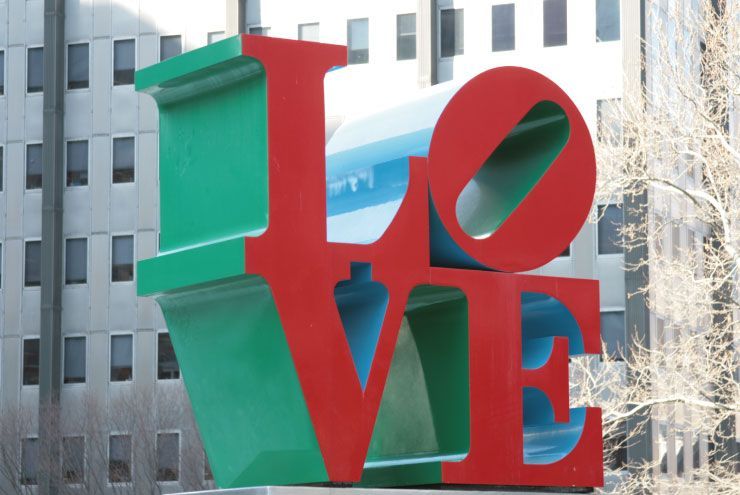By Nikita Shepard
This February, Black History Month offers us an opportunity to remember and to learn about the civil rights movement, as well as focus on the courageous Black, queer, and trans individuals who paved the way. More and more histories are acknowledging the critical role that queer Black activists played in the movement to end segregation and pursue racial justice, from Mississippi politician Aaron Henry, to author James Baldwin, to the brilliant gender non-conforming lawyer, activist, and priest Pauli Murray.
Yet lesser known is the pivotal role played by two gay men—one Black, one white—in one of the most important early instances of nonviolent direct action against segregation in the Jim Crow South. This is the story of the Journey of Reconciliation, also known as “the first Freedom Ride,” the 1947 effort by an interracial group of activists to challenge segregation on interstate buses in the South.
I grew up in North Carolina and lived in Chapel Hill for over a decade. Nearly every day, I would pass by a historical marker downtown that mentioned the Journey of Reconciliation, with its references to a mob attacking civil rights protestors and time spent on the chain gang. Yet despite my passion for queer history, I had no idea of the central role that gay men played in that story, many years before the rise of a gay and lesbian movement inspired by and modeled on the Black freedom struggle.
This article revisits a critical chapter from the pre-history of the civil rights movement to remember the heroic queer folks who braved mobs and chain gangs for defying Jim Crow while Martin Luther King, Jr. was still a teenager. Their actions helped lay the groundwork for an explosion of civil rights activism over the following decades, while the friendship they forged through their shared determination to live their convictions in the face of violence and bigotry would last the rest of their lives.
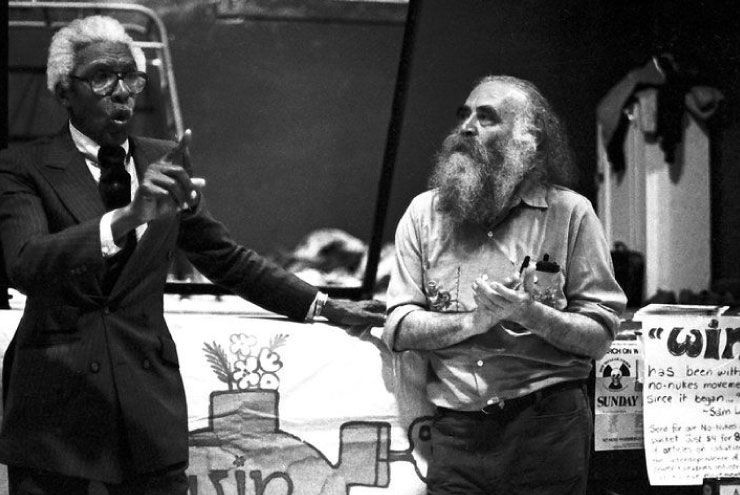
Photo: David McReynolds
The roots of the first Freedom Ride lay in the political conflicts and racial tensions swirling throughout the United States during World War II. As the nation mobilized for war, Black activists such as A. Philip Randolph demanded that new defense industry jobs be made available to Black workers. President Roosevelt, fearing the international embarrassment that a planned march on Washington would bring, signed an executive order in 1941 banning racial discrimination in hiring for defense jobs. But the military remained segregated, and Black soldiers found themselves underpaid, disrespected, and relegated to menial jobs in the armed forces. Black newspapers promoted the “Double V campaign,” calling for victory over tyranny and prejudice abroad as well as at home, and by the war’s end, a wave of returning Black GIs were ready to challenge the pervasive racism that structured American life.
Meanwhile, a small group of pacifists had opposed the war, and had spent the early 1940s in prisons or camps established for conscientious objectors (COs). Activists had used their confinement as an opportunity to organize, staging protests and strikes against racial segregation in the camps and circulating radical ideas.
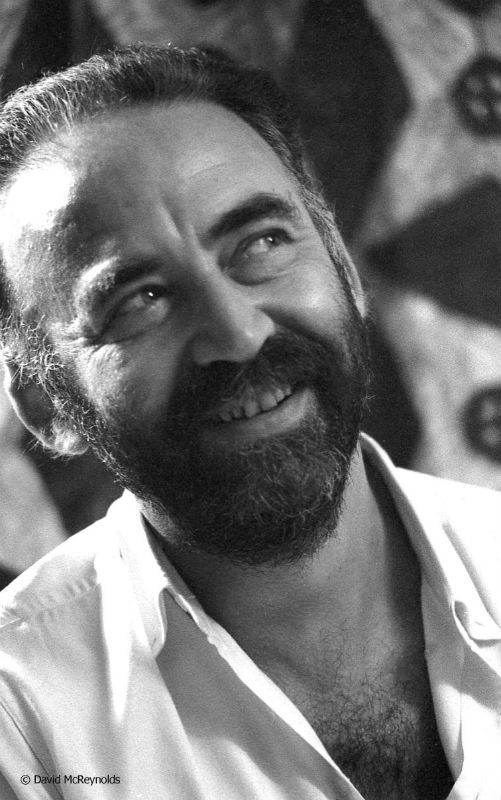
Photo by David McReynolds.
One such activist was Igal Roodenko, born to a Ukrainian-American Jewish family in New York in 1917 and a committed pacifist and anarchist. When he refused on principle to serve the war effort, he was incarcerated in a federal prison in Minnesota, where he sued the government and nearly reached the Supreme Court on appeal. Meanwhile, Bayard Rustin was also raising hell after landing in the penitentiary in Kentucky for resisting the draft. A Quaker with West Indian roots, he had been involved in left-wing, civil rights, and pacifist activism for years, including helping Randolph pressure the president into banning racial discrimination in defense employment. When his refusal to submit to the draft board landed him in prison, he brought his formidable organizing skills to bear on his new environment. By the war’s end, both men had earned their reputations as dedicated rabble-rousers, and upon their release, renewed their commitment to fighting racism and militarism through nonviolent direct action.
When Rustin emerged from prison in June 1946, he resumed working for the Fellowship of Reconciliation (FOR), a New York–based pacifist organization, and with the Congress of Racial Equality (CORE), a civil rights group committed to applying tactics of Gandhian nonviolence to challenge racism in the United States. The same month he was released, the Supreme Court had ruled in Morgan v. Virginia that upholding racial segregation on interstate buses was unconstitutional—yet such segregation remained in effect. Rustin urged FOR and CORE to organize an effort to challenge this now illegal segregation through nonviolent direct action, using an interracial team of volunteers riding through the South while politely refusing to accept Jim Crow.
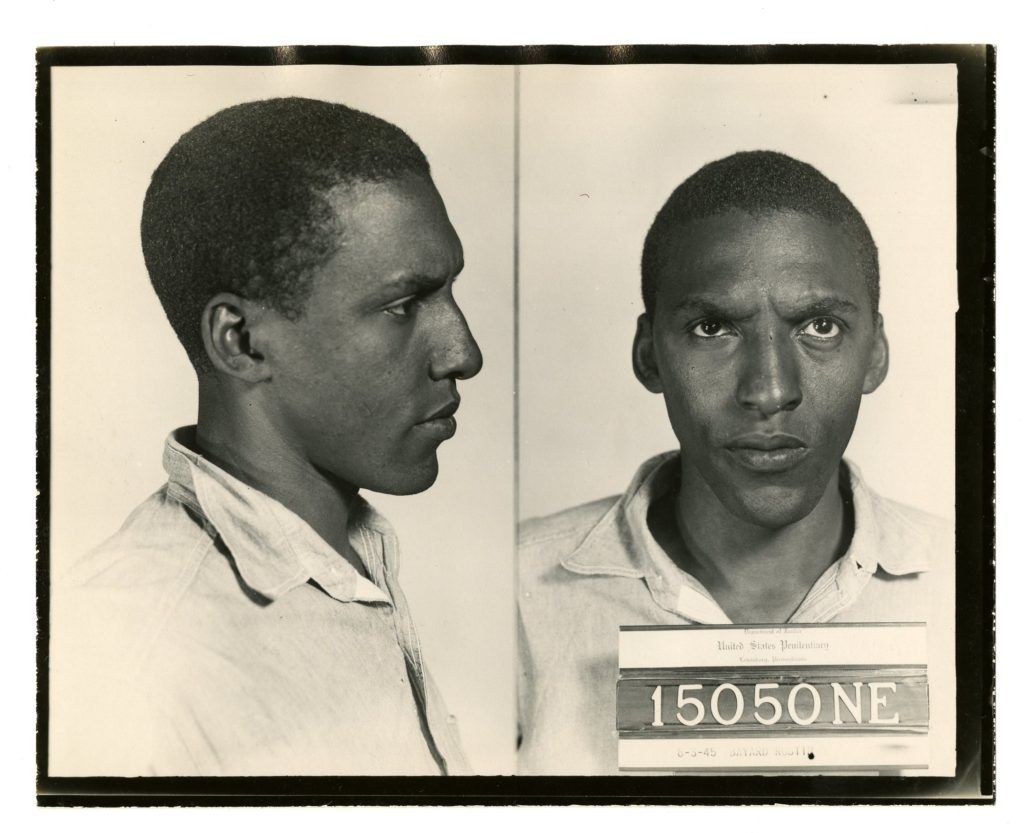
Roodenko was finally released in January 1947 and returned to New York, where he reconnected with Rustin. As gay men, conscientious objectors, and committed activists, they formed a connection that would last the rest of their lives. As he moved forward with plans for the interstate bus action, Rustin asked his friend to take part. Rustin later recalled, Roodenko was also “very timid, but since he was one of my best friends I spent months convincing him to join the Reconciliation Journey…” He eventually agreed, and in April 1947, the two friends joined 14 other white and Black men in Washington, DC, and set off in teams to test whether Greyhound and Trailways buses were respecting the Supreme Court’s desegregation order.
After a quiet start in Virginia, tensions mounted when the groups crossed into North Carolina. They faced harassment from hostile bus drivers and threats of arrest. One rider was jailed en route to Raleigh, while Rustin and two others were detained by police in Durham. But it wasn’t until the riders arrived in Chapel Hill—perceived then and now, as an open-minded and liberal oasis in the state—that things began to get ugly.
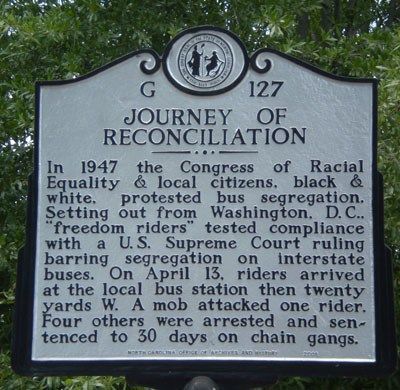
On Sunday, April 13, the group boarded the bus in Chapel Hill. When an interracial pair were confronted and arrested for sitting together up front, passengers began to protest. Emboldened, Rustin and Roodenko, who had been sitting towards the back, moved up and assumed the seats their companions had been dragged from just moments before. The police returned to the bus and hauled both Rustin and Roodenko to jail. A fifth member of the group was attacked after coming out from the police station. When the riders were bailed out, they retreated to the home of a supportive local minister, while a hostile mob wielding clubs pursued hot on their heels, threatening to burn the house down. Only by threatening an indifferent police force into protective action and recruiting an array of supportive students to drive the men to nearby Greensboro that night did the riders avoid a worse situation.
Shaken but determined, the riders proceeded, and the Journey for Reconciliation passed through Tennessee, Kentucky, and then back through Virginia to end where it had started in Washington, DC. Between legs of the journey, they met with local civil rights activists for rallies and discussions, educating communities about nonviolent direct action and hoping to help catalyze a broader movement of resistance to Jim Crow. By the end of the journey, they had experienced a dozen arrests and many tense situations, but had lived to tell the tale, and spoken to hundreds of supporters along the way.
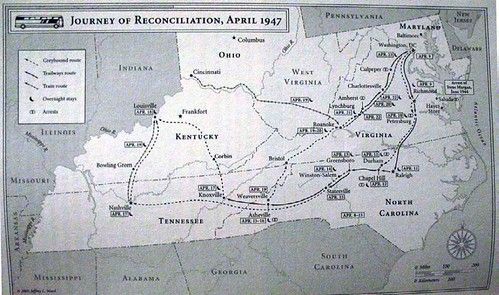
While most municipalities dismissed the criminal charges against the riders, preferring to keep the troublemakers out rather than offer them another platform for agitation, North Carolina authorities were determined to make an example of the four men who’d refused to give up their seats in Chapel Hill. As Rustin and Roodenko prepared to return for their court appearance, NAACP President Roy Wilkins called Rustin to request that the men plead guilty to the charges. The local defense attorney charged with handling the cases had apparently lost the bus tickets proving that the men were engaged in interstate travel. This gaffe undermined their defense. If the movement lost their test case, it would set a bad precedent. (Rustin later insisted that the attorney had been bought off by segregationist authorities, concluding that the case showed how the struggle “has never been just Black against white, but justice against injustice, because here’s the case of a Black attorney who does us in.”) Whatever the story, Rustin and Roodenko agreed to plead guilty.
As Rustin later recalled:
I came before the judge before Roodenko, and the judge says, ‘Well, I know you’re a poor, mislead nigra from the north. Therefore I’m going to give you thirty days on the chain gang.’ Then very angrily he said, ‘Now Mr. Rodenky’—purposefully mispronouncing his name. He says, ‘I presume you’re Jewish, Mr. Rodenky,’ and Igal says, ‘Yes, I’m Jewish.’ He says, ‘Well, it’s about time you white Jews from New York learned that you can’t come down here bringing your nigras with you to upset the customs of the south. Now, just to teach you a lesson I have your black boy thirty days on the chain gang, now I give you ninety.’ Years later I used to say to Igal, ‘Well, you see, there was some advantage to being black.’
After a protracted legal battle culminating in an unsuccessful appeal, Rustin, Roodenko, and their co-defendant, Joe Felmet, surrendered themselves and were hauled off to join a prison road gang in Reidsville, North Carolina.
While both men had previously served substantial stretches in prison for their pacifist activism, North Carolina’s chain gang had a well-deserved reputation for exceptional brutality. While Rustin and Roodenko avoided the worst of it, they saw men chained spread-eagle to the bars of their cell all night, men hung by their wrists with their feet dangling, or stuffed into “sweatbox” solitary confinement chambers without food or even a toilet. Rustin recalled:
On one occasion when I simply refused to be cooperative at the point that they were insisting that I entertain them by dancing, they took out pistols and were shooting at the ground around my feet for the purpose of trying to make me dance. Of course I wouldn’t do it, which greatly embarrassed them—because this created a feeling amongst the other prisoners that they did not always have to do what they were told to do.
Despite his defiance, Rustin was released early for good behavior after 22 days. Roodenko, a strict vegetarian, survived on biscuits and blackstrap molasses, and after his weeks breaking rocks in the North Carolina sun, returned to New York City. Rustin first headed to Chapel Hill, where he delivered a speech at a law school and authored a vivid report detailing his experiences on the chain gang. The explosive account, published in newspapers and sent directly to the state’s governor, prompted an investigation, the prosecution of an abusive guard, reforms, and eventually, the abolition of the chain gang in the state.
The immediate impact of the Journey of Reconciliation seemed minor. Trailways and Greyhound continued to maintain segregation on their interstate buses and facilities. Little tangible growth in CORE or other local or regional civil rights organizations appeared in its wake. However, the longer-term impact rippled for years to come. As Roodenko later reflected, “I think we created the mood, or opened up the mood so that more and more people in their own way, whether they knew of our specific thing or not, felt somewhat more courageous or foolhardy to act on what they felt was right.”
Years before the rise to prominence of Dr. Martin Luther King, Jr., the Montgomery Bus Boycott, or the Greensboro lunch counter sit-ins, these courageous activists provided one of the first examples of applying Gandhi’s principles of nonviolent disobedience to the civil rights movement in the United States. Nearly 15 years later, when activists around the country undertook the now famous 1961 Freedom Rides that resulted in the final defeat of segregation on interstate buses, they drew on the model set by their predecessors in the Journey of Reconciliation.
At the heart of the story are two gay men, whose determination to confront the hatred and bigotry of Jim Crow with love and justice laid the groundwork for the struggles and victories of the future.
Upon returning from the Journey of Reconciliation, the two men became neighbors. Rustin moved into the apartment just below Roodenko’s in the same tenement apartment building on Mott Street on New York City’s Lower East Side. They remained there for years, collaborating on pacifist and civil rights activism. When Rustin lost his job as an organizer for the Fellowship of Reconciliation following his 1953 arrest for having sex with two men in Pasadena, California, Roodenko helped him get hired by the War Resisters League, a pacifist organization that Roodenko helped run. This second chance restored Rustin’s place in the movement, leading directly to his invitation to Montgomery to advise Martin Luther King, Jr. and his rise as one of the most prominent strategists of the civil rights movement.
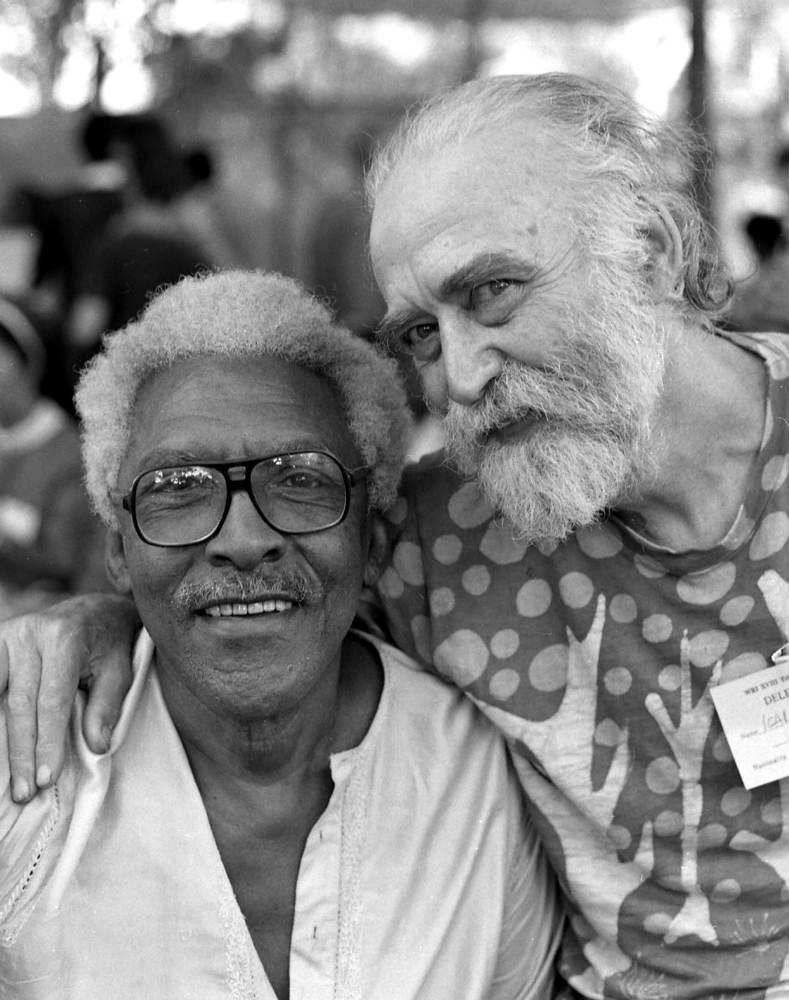
The two men remained friends for the rest of their lives. Roodenko finally came out of the closet publicly in the years after the Stonewall Rebellion, when the emergence of gay liberation shifted the context enough to enable him to feel that doing so wouldn’t jeopardize the pacifist activism that formed the core of his life. Rustin survived efforts by racist politicians and jealous Black leaders to gay-bait him through the 1960s and remained politically active until his death in 1987. In the 1980s, both men would join and participate in Black and White Men Together, a multicultural gay anti-racist organization, and added gay rights to the list of causes for which they advocated over their long lives of activism. By the end of their lives, they had finally become able to openly avow the queer love that lay at the foundation of their commitment to peace and racial justice.
References
Anderson, Jervis. Bayard Rustin: Troubles I’ve Seen. New York: Harper Collins, 1997.
D’Emilio, John. Lost Prophet: The Life and Times of Bayard Rustin. New York: Free Press, 2003.
Houser, George, and Bayard Rustin. We Challenged Jim Crow! A Report of the Journey of Reconciliation. New York: Fellowship of Reconciliation / Congress on Racial Equality, 1947. Available online at http://libcdm1.uncg.edu/cdm/ref/collection/CivilRights/id/3675.
Meier, August, and Elliott Rudwick. “The First Freedom Ride.” Phylon: The Atlanta University Review of Race and Culture 30, no. 3 (Fall 1969), 213–23.
NYC LGBT Historic Sites Project, “Igal Roodenko / Bayard Rustin Residence.” https://www.nyclgbtsites.org/site/igal-roodenko-bayard-rustin-residence/
Roodenko, Igal. Oral History Interview, April 11, 1974. Interview B-0010. Southern Oral History Program Collection (#4007), UNC-Chapel Hill. https://docsouth.unc.edu/sohp/html_use/B-0010.html
Rustin, Bayard. “Reminiscences of Bayard Rustin—Oral History.” Columbia Oral History Archives, NXCP87-A1625, Columbia University.


